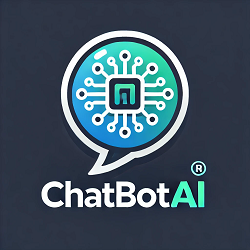By Dr. Dwi Suryanto
Introduction: The $6 Million Disruption
In November 2022, OpenAI’s ChatGPT redefined AI. But in 2024, a Chinese lab named DeepSeek flipped the script.
- Trained in 60 days for $5.6 million, DeepSeek v3 rivals GPT-4 in coding, math, and reasoning.
- Costs 1/30th of OpenAI’s API pricing (0.10vs.4.40 per million tokens).
- Why it matters: China’s open-source AI leap challenges Silicon Valley’s $100M+ R&D playbook—and could redraw global tech power dynamics.

What is DeepSeek?
A Beijing-based AI lab backed by High Flyer Quant (an $8B hedge fund).
- Mission: “Unravel the mystery of AGI with curiosity.”
- Key innovation: Combines cutting-edge performance with radical cost efficiency.
- Open-source advantage: Full access to model weights, attracting developers worldwide.
How DeepSeek Outperformed US Giants
1. Hardware Hacks: Beating the Chip Ban
The US restricted China’s access to Nvidia’s H100 GPUs. DeepSeek responded with:
- Nvidia H800 GPUs: Lower-tier chips optimized via 8-bit floating-point training (FP8), slashing memory use by 50%.
- Efficient scaling: Used 1,500 H100-equivalent GPUs vs. OpenAI’s 50,000+ for GPT-4.
2. The Mixture of Experts (MoE) Edge
- Smaller, specialized models: DeepSeek’s MoE architecture splits tasks into “expert” submodels, reducing computational waste.
- Stable training: Solved erratic “loss spikes” that plague most MoE systems, cutting downtime.
3. Knowledge Distillation
- Trained smaller models using outputs from GPT-4 and Claude—leveraging existing tech to close the gap.
DeepSeek vs. OpenAI: Cost & Performance Breakdown
| Metric | DeepSeek v3 | OpenAI GPT-4 |
|---|---|---|
| Training Cost | $5.6M | $100M+ |
| API Cost/1M Tokens | $0.10 | $4.40 |
| Training Time | 60 days | 6-12 months |
| Key Strength | Coding, math, reasoning | Multimodal versatility |
Source: DeepSeek technical paper, OpenAI disclosures.
Why Silicon Valley is Nervous
- The Open-Source Domino Effect
- Developers can now build GPT-4-level apps for 1/30th the cost.
- Example: Perplexity.ai uses DeepSeek to reduce inference costs while scaling its answer engine.
- Geopolitical Risks
- Ecosystem control: If Chinese open-source models dominate, they could shape global AI standards.
- Censorship concerns: Models like Alibaba’s Qwen already filter topics like Tiananmen Square.
- The End of the “AI Moat”
- Former Google CEO Eric Schmidt: “China caught up in 6 months.”
- Startups can now compete with giants using open-source models—no $1B budget required.
The Future of the AI Race
1. Reasoning: The Next Battleground
While GPT-4 dazzles with multimodal capabilities, DeepSeek’s R1 model targets Silicon Valley’s Achilles’ heel: logical reasoning.
- Benchmark dominance: R1 outperformed OpenAI’s o1 in third-party tests analyzing complex physics and coding challenges.
- Cost collapse: UC Berkeley researchers built a reasoning model for $450—proving elite AI no longer requires elite budgets.
Why this matters: Reasoning unlocks applications like autonomous R&D, legal analysis, and real-time decision-making. If China corners this niche, it could dominate industries beyond tech.
2. US Countermeasures
Silicon Valley isn’t sitting idle:
- Meta’s Llama 4: Leaked plans reveal a MoE-based open-source model to rival DeepSeek’s efficiency.
- OpenAI’s o1 pivot: Shifting focus from raw scaling to “thinking” models that simulate human-like deliberation.
- Chip innovation: Startups like Cerebras design GPUs optimized for sparse compute, sidestepping Nvidia’s China restrictions.
But critics argue these moves are reactive. As Perplexity CEO Arvind Srinivas notes:
“The U.S. assumed its $100M models were untouchable. DeepSeek proved that’s a myth.”
3. China’s Long Game
Beijing’s strategy hinges on open-source dominance:
- Cost warfare: Alibaba slashed LLM training costs by 85%, undercutting Western pricing.
- Developer lock-in: DeepSeek’s open weights let developers build custom apps—free today, but licensable tomorrow.
- Global standards: By 2025, 60% of GitHub’s top AI projects could rely on Chinese models, predicts Gartner.
The playbook mirrors Android’s rise: commoditize the ecosystem, then monetize control.
Key Takeaways for Tech Leaders
1. For Developers
- Adopt open-source models: Use DeepSeek’s API ($0.10/1M tokens) for cost-heavy tasks like data preprocessing or chatbots.
- Beware licensing traps: Monitor terms—China could restrict commercial use after mass adoption (see: Tencent’s 2023 SDK changes).
- Focus on specialization: Fine-tune models for niches (e.g., medical diagnostics, supply-chain analytics) where reasoning beats scale.
2. For Investors
- Bet on efficiency: Startups like MosaicML (training LLMs for 1/10th the cost) are rising stars.
- Diversify geographically: Allocate 20-30% of AI portfolios to Asia-Pacific firms leveraging China’s ecosystem.
- Avoid “GPT clones”: The next unicorns will solve specific problems (e.g., AI chemists, robotic process automation), not chase general AI.
3. For Policymakers
- Rethink chip bans: Export restrictions pushed China to innovate—now they risk backfiring.
- Fund open-source: The NSA’s $50M grant to EleutherAI shows the U.S. is scrambling to counter China’s momentum.
- Ethical guardrails: Mandate transparency audits for AI models to prevent censorship creep (e.g., DeepSeek filtering Taiwan references).
Case Study: Perplexity’s DeepSeek Gambit
Perplexity.ai, a Google Search rival, slashed costs by integrating DeepSeek:
- Costs down 70%: Reduced token expenses from 4.40to1.30 per million.
- Speed boost: 16 tokens/second vs. GPT-4’s 4 tokens/second.
- Edge cases: Retained OpenAI for nuanced queries (e.g., historical analysis) but uses DeepSeek for 80% of traffic.
CEO Arvind Srinivas:
“DeepSeek isn’t better than GPT-4—it’s just 30x cheaper. For startups, that’s the difference between life and death.”
Conclusion: The New Rules of AI
DeepSeek’s rise signals a tectonic shift: efficiency trumps brute-force spending. While the U.S. leads in foundational research, China’s open-source blitz could democratize AI—demolishing barriers to entry and reshaping global power dynamics.
The lesson? In 2024, agility beats budget size. Companies that master lean innovation will thrive; those clinging to old paradigms risk obsolescence.
As Stanford AI researcher Fei-Fei Li warns:
“This isn’t an AI race—it’s a marathon. And China just sprinted ahead.”
Go Deeper:

